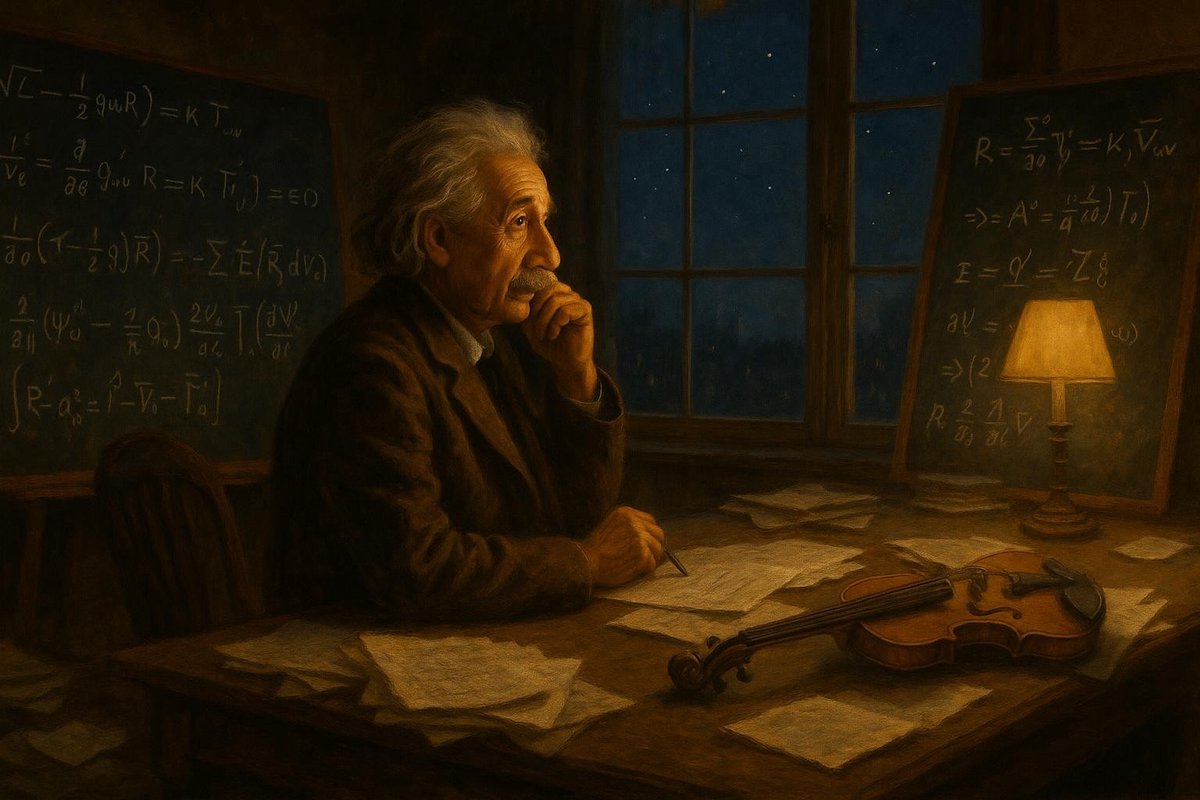
Origin: A Young Mind in Turbulent Times
Picture a young Albert Einstein, just a boy in the city of Munich, surrounded by the ticking clocks of his father’s electrical shop. Here, amid the hum of innovation, Einstein’s journey began. He was fascinated by the mysteries of light and time. But what was the world like before his groundbreaking ideas? Well, at the turn of the 20th century, many scientists viewed the universe as a vast, unchanging mechanism. Newton’s laws reigned supreme, and time was seen as a constant, ticking forward like the clocks in that shop. Einstein, however, had a different vision.
- As a teenager, Einstein pondered what it would be like to chase a beam of light.
- He questioned the nature of time and its relation to motion, concepts that would soon become central to his work.
His curiosity and relentless questioning laid the groundwork for a transformation in scientific thought. By envisioning the universe not as a rigid machine but as a dynamic symphony, Einstein was poised to change everything.
Key Figures: The Genius Behind the Theory
At the heart of this transformational journey was Albert Einstein himself, a figure whose name is now synonymous with genius. Born in 1879 in Ulm, Germany, he was not immediately recognized as exceptional. Yet, as he grew, so did his curiosity and brilliance. Interestingly, many people believe that his revolutionary ideas were hatched in academic halls, but they were actually born in a patent office in Bern, Switzerland. It was here, amidst the monotony of reviewing inventions, that Einstein’s imagination soared.
- In 1905, his ‘Annus Mirabilis’ (Miracle Year), Einstein published four papers that changed physics forever.
- His work on the photoelectric effect, Brownian motion, special relativity, and mass-energy equivalence showcased his genius.
Einstein’s vision of the universe as a symphony rather than a mechanism was deeply influenced by his appreciation for music. His love for the violin paralleled his scientific work, allowing him to visualize the cosmos in harmonious terms. Of course, he wasn’t alone on this journey—he was part of a community of scientists who engaged with his ideas, sometimes with skepticism, but often with admiration.
Turning Point: The Moment the Universe Changed
The year was 1915, and the setting was Berlin. Here, Einstein was on the brink of a breakthrough that would redefine gravity and our understanding of space-time. For years, he had been wrestling with the equations, losing sleep and health over them. Then, in a eureka moment, the pieces fell into place. He had formulated the General Theory of Relativity.
- The theory proposed that gravity is not a force but a curvature in the fabric of space-time caused by mass.
- It predicted phenomena like the bending of light around massive objects, which was later confirmed during a solar eclipse in 1919.
This was not just a new theory; it was a new way of seeing the universe. Instead of a static, clockwork world, Einstein revealed a cosmos that was dynamic and interconnected, a true symphony of space and time.
Impact on the World: A Legacy Beyond Imagination
The impact of Einstein’s Theory of Relativity has been profound and far-reaching. It revolutionized the field of physics and opened new avenues for understanding our universe. Interestingly, it also captured the public’s imagination, turning Einstein into a global icon. His ideas didn’t just stay in the realm of academia; they permeated culture and inspired future generations of scientists.
- Relativity has paved the way for technologies like GPS, which relies on its principles to provide accurate positioning.
- It has also inspired countless works of fiction and art, reinforcing the notion of the universe as a mysterious and wondrous place.
As time goes on, Einstein’s vision continues to influence scientific exploration, from black holes to the expansion of the universe. His symphony of space and time remains as compelling as ever, reminding us of the beauty and complexity of the cosmos we inhabit.
Conclusion: The legacy of Einstein’s Theory of Relativity is a testament to the power of imagination and inquiry. It transformed our understanding of the cosmos and continues to inspire awe and curiosity. As we explore new frontiers in science, Einstein’s symphony plays on, inviting us all to listen and learn.
Fuel Someone Else’s Curiosity: If you found this journey into Einstein’s universe inspiring, share it with others. Encourage them to explore the wonders of science and the stories behind its greatest discoveries. After all, curiosity is the spark that keeps the symphony of knowledge alive and vibrant.

Leave a Reply